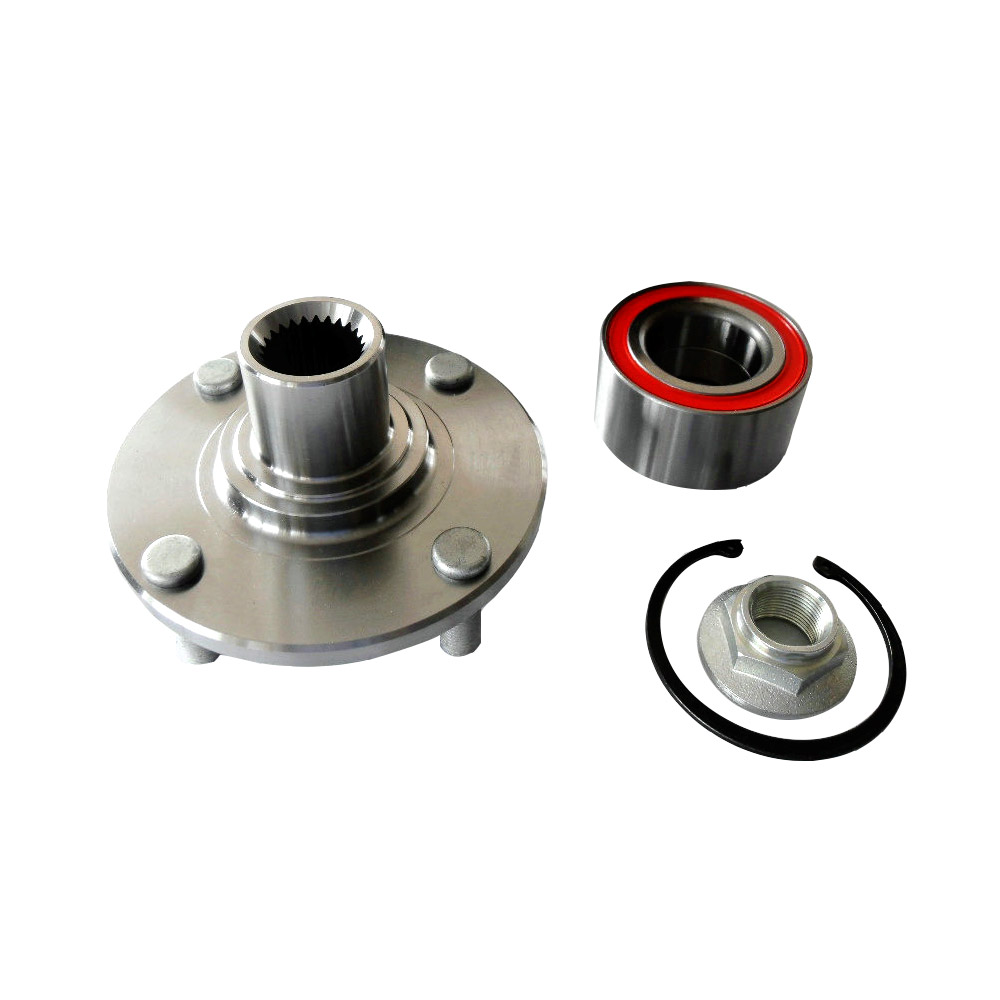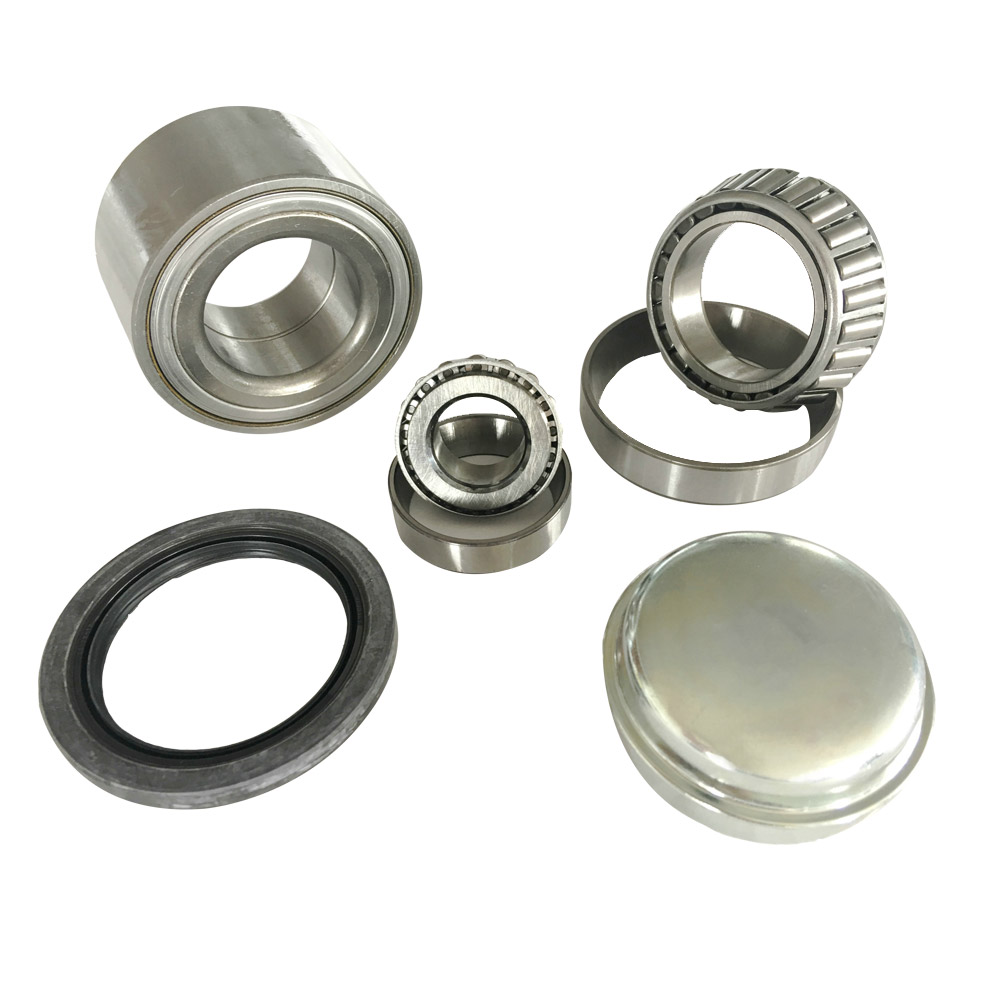Signs, Causes, and What to Do When a Wheel Hub Spindle Fails
The wheel hub spindle is a crucial part of your vehicle’s suspension and steering system. It connects the wheel hub to the steering knuckle or axle, allowing the wheel to rotate smoothly while supporting the vehicle’s weight and maintaining alignment. Because of its central role in safety and performance, any issues with the spindle can lead to serious mechanical problems or even accidents if ignored.
But how do you know if your wheel hub spindle is going bad?
In this article, we’ll cover:
-
What a wheel hub spindle does
-
Common symptoms of a failing spindle
-
Causes of spindle damage
-
Inspection tips
-
What happens if you ignore the issue
-
When and how to replace the spindle
1. What Is the Wheel Hub Spindle and What Does It Do?
The spindle is the component on which the wheel hub assembly (and the wheel itself) rotates. It's typically found on non-drive wheels, though in some configurations it may work with CV joints or other axle components.
It serves several key purposes:
-
Supports the wheel hub and bearing
-
Provides a mounting point for the brake components
-
Connects the suspension and steering systems
-
Allows smooth, controlled rotation of the wheel
Without a properly functioning spindle, the wheel cannot rotate correctly, which may lead to wheel misalignment, bearing failure, or brake issues.

2. Signs Your Wheel Hub Spindle May Be Bad
Like many suspension components, spindle damage is not always obvious at first. However, several symptoms may indicate your spindle is failing:
a) Uneven or Excessive Tire Wear
One of the earliest signs is abnormal tire wear, especially on one side. A bent or misaligned spindle will throw off the camber angle, leading to premature tread damage.
b) Vibrations While Driving
A damaged or warped spindle can cause vibration or wobbling while driving, especially at higher speeds. This is due to the wheel not spinning evenly.
c) Clunking or Grinding Noises
If the spindle is cracked or the bearing isn’t properly aligned due to spindle damage, you may hear metal-on-metal sounds, particularly when turning or braking.
d) Steering Instability or Pulling
Your vehicle may pull to one side or feel loose in the steering. This can occur if the spindle is bent, affecting the wheel alignment and suspension geometry.
e) Brake Pad Rubbing or Poor Braking
Spindles help align the brake rotor and caliper. A bent spindle may result in brake pads dragging, uneven wear, or poor braking performance.
f) Visible Damage During Inspection
In some cases, visual inspection may reveal a cracked, corroded, or bent spindle, especially if the vehicle has been in a collision or exposed to harsh conditions.
3. What Causes a Wheel Hub Spindle to Fail?
While wheel hub spindles are designed to be tough and durable, they can still fail over time or due to external stressors. Common causes include:
a) Impact or Collision
The most frequent cause of spindle damage is hitting a pothole, curb, or debris at high speed. Any strong impact can bend or crack the spindle.
b) Bearing Failure
If a wheel bearing fails and is not replaced in time, it can cause excessive stress or heat, damaging the spindle surface where the bearing seats.
c) Overloading or Towing
Consistently exceeding the vehicle’s load rating—especially with off-road driving or towing—can accelerate wear on the spindle and bearings.
d) Rust and Corrosion
Vehicles in wet, snowy, or salty environments are at risk of corrosion-related spindle damage, particularly around the threads and bearing mount.
e) Improper Installation
Over-torquing or misalignment during installation of hubs, brakes, or bearings can warp or crack the spindle over time.
4. How to Inspect a Wheel Hub Spindle
If you suspect a spindle issue, it's best to lift the vehicle safely and remove the wheel and hub assembly. Here’s what to check:
-
Check for visible cracks, bends, or deformities in the spindle shaft
-
Look at the bearing surface—it should be smooth, not grooved or scorched
-
Check spindle threads for wear, stripping, or corrosion
-
Use a dial indicator or straightedge to check spindle runout (bending)
-
Spin the hub assembly by hand—look for resistance or irregularity
-
Wiggle the spindle—it should be rigid with no play
If you're unsure or don’t have the tools, a qualified mechanic should perform the diagnosis.
5. What Happens If You Don’t Replace a Bad Spindle?
Delaying spindle repair can have serious consequences:
-
Increased bearing and tire wear
-
Loss of steering control
-
Brake failure or reduced stopping power
-
Vibration damage to suspension components
-
Higher long-term repair costs
-
Wheel detachment in extreme cases
In short, ignoring a failing spindle is a safety hazard—not just for you but for others on the road.
6. Replacing a Damaged Spindle: What You Need to Know
Spindle replacement typically involves:
-
Lifting the vehicle and removing the wheel
-
Removing the brake caliper, rotor, and hub assembly
-
Disconnecting from control arms or ball joints
-
Installing the new spindle and reassembling components
In most modern vehicles, the spindle is integrated with the steering knuckle, so the entire knuckle assembly may need to be replaced.
DIY or Mechanic?
-
If you’re an experienced DIYer with the right tools (ball joint separator, torque wrench, jack stands), it’s possible to do it yourself.
-
For others, professional installation is recommended to ensure alignment, torque specs, and safety.
7. Tips for Preventing Spindle Damage
-
Avoid potholes and rough terrain when possible
-
Replace wheel bearings and hub assemblies at the first sign of failure
-
Don’t overload your vehicle, especially when towing or hauling
-
Get your wheel alignment checked regularly
-
Use anti-seize grease during installation in humid or corrosive environments
Conclusion
The wheel hub spindle may be small and unassuming, but it plays a vital role in your vehicle’s operation. Recognizing the symptoms of spindle failure—from unusual tire wear to steering instability—can help you act before a minor issue turns into a major repair or safety hazard.
If you’re experiencing any of the warning signs mentioned in this article, have your vehicle inspected as soon as possible. Prompt diagnosis and spindle replacement can help you maintain safety, performance, and peace of mind on the road.






